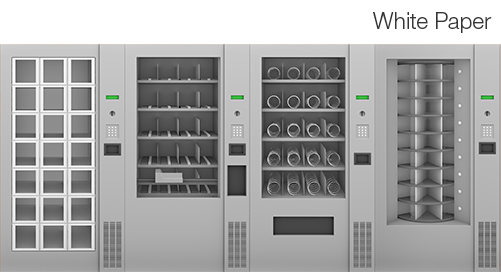What is a pick and place robot? The all-in-one guide
Pick and place applications are some of the most commonly automated nowadays due to their simplicity and repetitive nature. However, this means the options available for pick and place robots are vast.
It’s important to understand the different types of pick and place robots in order to choose the ideal solution for your application. By the end of this article, you’ll have the information necessary to make the proper choice of pick and place robot.
What is a pick and place robot?
Simply put, pick and place robots pick up products and move them from one place to another. They’re most often used in applications with high throughput, like those in the packaging, food, and beverage industries.
Read more: Food manufacturing made better with robotics
Types of pick and place robots
Robots used in pick and place applications can vary greatly. Below are some of the most common.
Gantry Robots
Gantry robots are linear robots that move along three planes (X, Y and Z). They’re characterized by high positional accuracy and the ability to cover larger workspaces than most other pick and place robots.
Delta Robots
Delta robots are parallel robots consisting of three arms connected to a common joint above and below the arms. Their biggest advantage is speed, which comes at the cost of lower payloads than other pick and place robots.
Robotic Arms
5 and 6-axis robotic arms are the most commonly used pick and place robots due to their versatility. The freedom of movement they’re capable of makes them well suited for applications requiring complex movements.
Collaborative Robots (Cobots)
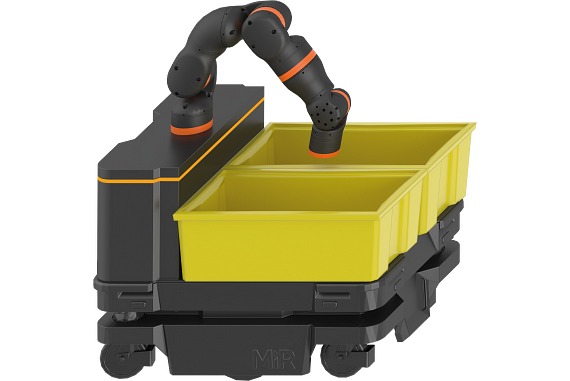 Cobots are designed to work alongside human employees to assist them in working more efficiently. In pick and place applications this typically means AGV-style cobots leading humans to pick locations using the most optimal route available, however robotic arm-style cobots can also be used in a wide range of pick and place applications.
Cobots are designed to work alongside human employees to assist them in working more efficiently. In pick and place applications this typically means AGV-style cobots leading humans to pick locations using the most optimal route available, however robotic arm-style cobots can also be used in a wide range of pick and place applications.
Read more: What are the different types of industrial robots?
Why should you use pick and place robots?
There’s a wide range of benefits to using robots instead of human workers for pick and place applications. These benefits include:
Productivity
Since robots are able to work around the clock without breaks and at faster rates than human workers, they’re inherently much more productive. This means a higher throughput, and ultimately increased profits & return on investment.
Reliability
Robots aren’t prone to making mistakes the way humans are, and therefore their reliability and consistency is much higher. Pick and place robots can be accurate within less than a single millimeter for each and every pick over the course of the robot's service life.
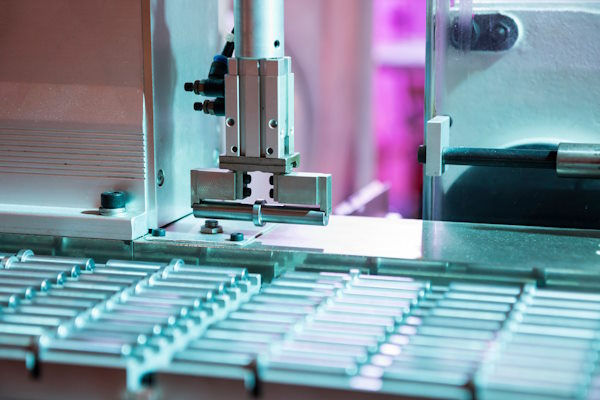
Safety
In any situation where human workers are transporting products, there’s risk of injury. Workers can trip over or drop products on themselves, causing potentially serious injury. With robots there is no risk of injury or other harm, making them a much safer choice for pick and place applications.
Return on Investment
Since pick and place robots are able to work faster and more efficiently than humans, they provide a faster return on investment. So while the initial investment is significantly higher with robots, they’re a much more cost-effective option in the long term. This is especially true of the offerings available from RBTX.com, an online robotics marketplace for low-cost components and solutions.
Read the white paper below to learn how you can reduce the cost and difficulty of implementing robotics with the RBTX marketplace!
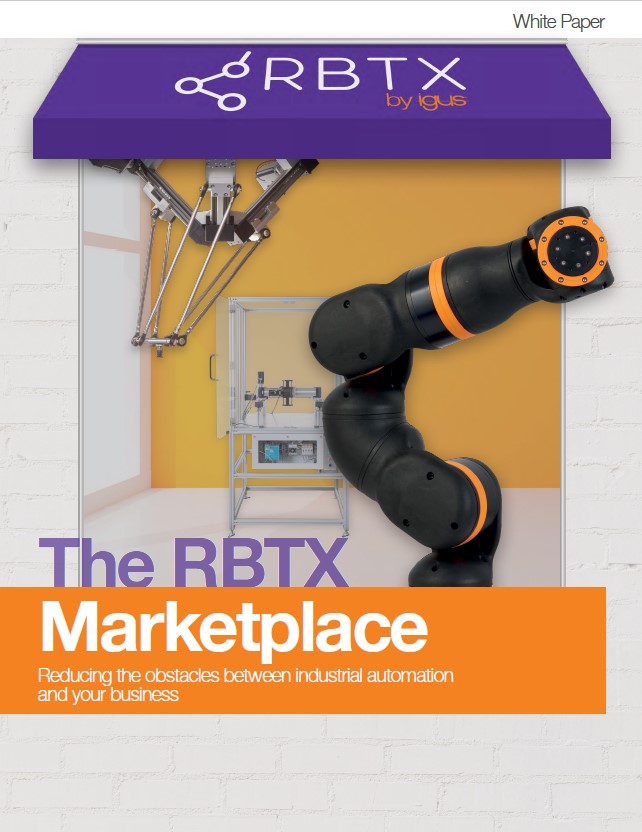
Applications for pick and place robots
The flexibility of pick and place robots allows them to be used across numerous applications. Learn more about some of the most common applications below.
Sorting
Sorting applications require pick and place robots to sort parts based on specified characteristics like size, color, or shape.
Bin Picking
In bin picking, robots will grab parts from a bin with the assistance of a vision system that helps the robot determine the color, size or shape of a part even if it’s mixed in with an assortment of different parts.
Packaging
Pick and place robots can move products to boxes and other containers to be packaged in packaging applications. This can be done from a designated area, or even a conveyor belt.
Related: Robotic packaging: the essential guide
Inspection
With an advanced vision system, pick and place robots can pick up objects and visually inspect them, looking for any defects and removing defective parts from the production line.
Assembly
Pick and place robots can grab incoming pieces of a larger assembly, and attach those pieces to other parts of the assembly before moving them to be transported to the next stage of assembly.
How to choose the right pick and place robot
With the amount of variety between different types of pick and place robots, choosing the proper one for your application is of utmost importance. There are a few key factors in an application that will determine the ideal robotic solution.
Budget
Your available budget is one of the most important factors to consider when choosing a pick and place robot. Low-cost delta and gantry robots can cost less than $10,000, while costs for certain robotic arms and cobots can exceed $50,000. Having a clear budget will help narrow down the available choices and prevent overspending.
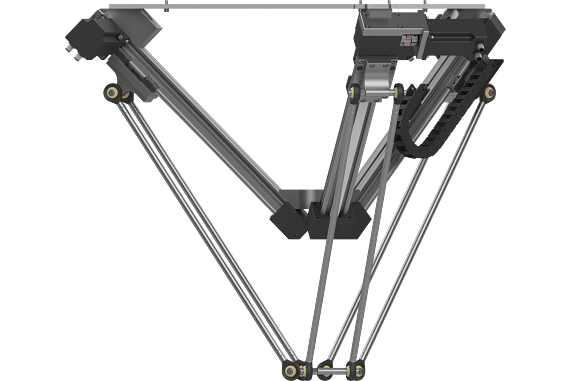 Speed
Speed
The required throughput of an application will determine the pick speed needed. Delta robots are the quickest pick and place robots in terms of picks/minute and will often be the ideal choice for rapid pick applications, assuming they meet all other application requirements.
Flexibility
Some pick and place applications like sorting will require robots to distinguish between different types of product, and place them accordingly. This level of flexibility is limited to robotic arms equipped with advanced vision systems. Simpler applications where the same product is being consistently moved from point A to point B won’t require the same level of flexibility from a pick and place robot.
Payload
Payload is another essential factor in choosing pick and place robots; if a robot isn’t able to handle the payload of the product it’s required to lift, it’s likely to experience rapid wear and possible failure. Payload will also impact the speed at which picks can be made, with heavier loads requiring more time per pick.
Repeatability
Repeatability — also referred to as positional accuracy — is how precise a robot’s movement can be. For applications requiring products to be placed in very specific locations, like in assembly tasks, a high level of repeatability is vital.
Workspace
The workspace available for a pick and place robot will have a direct impact on the size of robot that can be used in an application. Applications spanning particularly large spaces are best suited for gantry robots or cobots, for example.
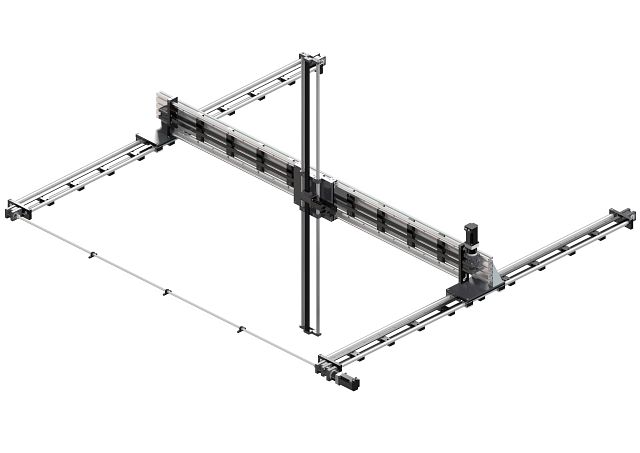
Conclusion
As more businesses turn to automation to increase production and profits, it’s becoming increasingly important for companies of all sizes to implement automation where possible to keep up with the competition. Pick and place robots in particular offer significant advantages over human labor, and are only going to become more and more prominent in the coming months and years.
To learn more about automation products and solutions from igus, visit our webpage! For questions about a specific product or application, contact an expert today.


